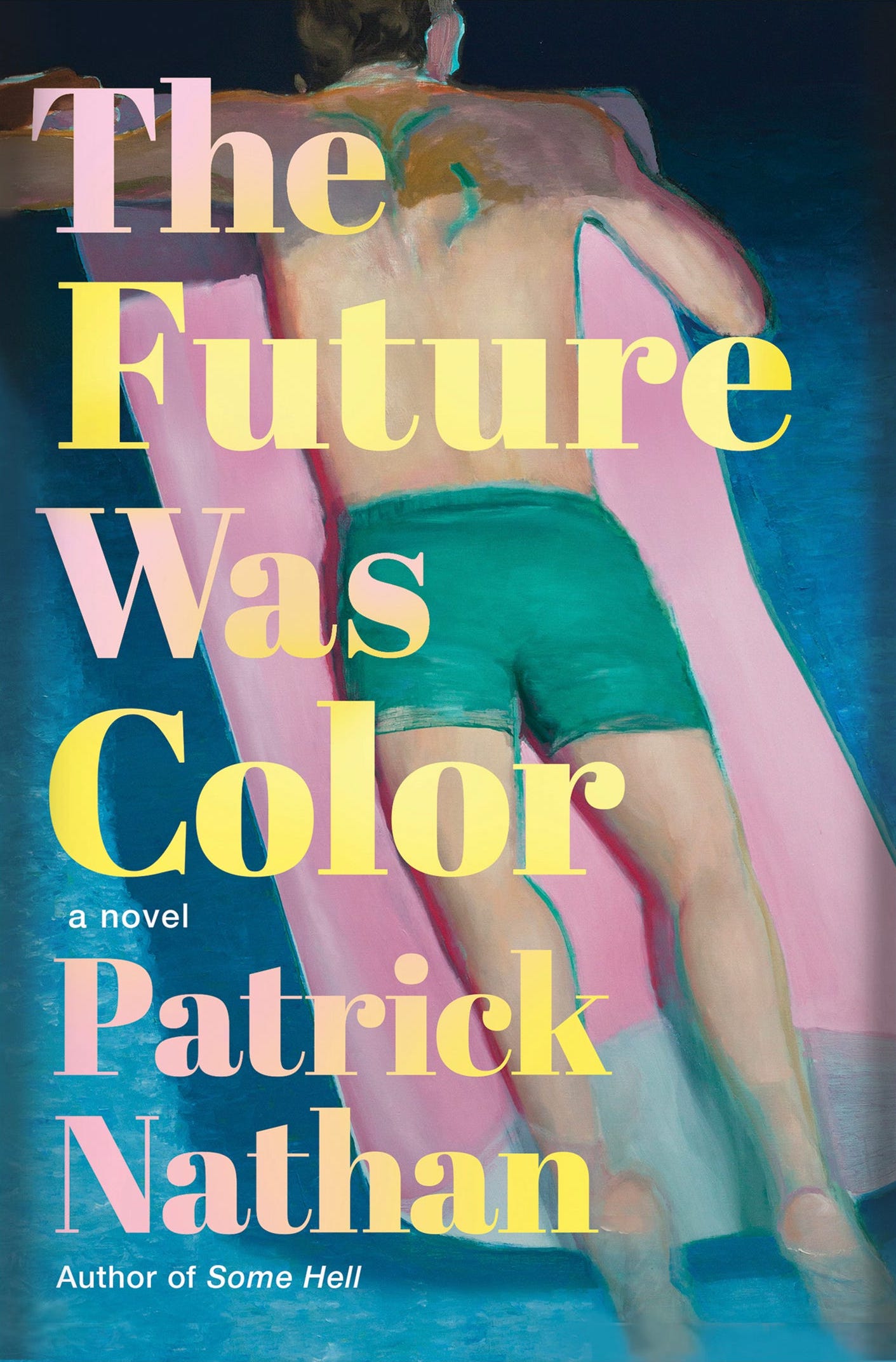 THE FUTURE WAS COLOR: A Novel
THE FUTURE WAS COLOR: A Novel
by Patrick Nathan
Counterpoint. 210 pages, $26.
GYORGY KERTESZ, the central character in this ambitious historical novel, The Future Was Color, fears the world will end before his life does. And with good reason: Gyorgy is Jewish. In 1944, at sixteen, he is sent by his parents from Budapest to New York City to escape the Holocaust, in which his parents will perish. Gyorgy is also gay. He falls in love with a troubled gay man who, believing he and Gyorgy can have no future together, introduces Gyorgy to anonymous sex in public toilets. When Gyorgy is entrapped and arrested, he flees New York and changes his name to avoid deportation.
Patrick Nathan is the author of Some Hell, a 2019 Lambda Award finalist for gay fiction, Image Control, a nonfiction book on visual media and the rise of fascism, and many essays. Not surprisingly, his latest book is a novel of ideas—
Despite his many mentors, Gyorgy knows he must discover for himself what to do with his life. He finds the answer one day in a movie theater. Watching newsreel footage of the bombing of Hiroshima followed by a science fiction film about space aliens invading the earth, Gyorgy has an epiphany. He realizes that such films, if good enough, can do what great art does: “shake and alter” people. Gyorgy decides his mission will be to warn Americans of their impending atomic doom.
The Future Was Color opens in 1956, the year of the failed Hungarian uprising. George Curtis, as Gyorgy is now known, is in Los Angeles writing screenplays for science fiction movies. One of his screenplays, about giant spiders that shoot flames from their eyes, is a box office success, terrifying audiences with scenes of apocalyptic destruction. Although he has tried to remain inconspicuous, suddenly George is popular. Living in the Hollywood of McCarthy-era witch hunts, he never reveals anything about his background except to say that he’s from Europe. He finds it more difficult to suppress his sexual urges.
The novel contains many erotically charged scenes. The key to their effectiveness is their restraint. Early in the novel, George and a fellow screenwriter, Jack, are working late at night in their studio office. Sweating at his typewriter, Jack, all-American handsome and presumably straight, unbuttons his shirt to the waist. George imagined that this would happen; it’s the reason he stayed late. While George steals furtive glances, Jack opens his shirt and eventually removes it. “Jack’s feet were propped on his desk, his free hand resting gently in his lap even if one finger waved calmly, like something alive at the bottom of the sea, as it brushed something sizably hidden.” Unexpected comparisons, such as the one in this sentence, are a distinctive feature of Nathan’s writing.
As he did in New York, George falls under the sway of personalities stronger than his own. Jack seduces him. Madeline, a movie star whose husband is a closeted gay actor, invites him to take a break from the studio and move into her house so he can do serious political writing. The frenzy of parties, drinking, and sexual escapades that follows reaches a climax in the penthouse of a Las Vegas hotel, where Madeline assembles her minions for a Day of the Dead party. Fueled by alcohol and Dexedrine, the guests—a satiric mixture of writers, scientists, professors, and hangers-on—babble sophisticated nonsense all night. George, who has reason to fear he has been entrapped by Jack, wanders the party in a stupor. At dawn, the party comes to a startling climax that confirms the worst of George’s fears. Once again, he flees.
The brief coda that ends the novel is set in Paris. George has found his home and his purpose. He belongs in the Old World, where he was born. He writes for a film magazine. Once he meets Jean-Marc, an actor, George has an eleven-year “streak of happiness.” It is now the early 1980s; we can guess what will end George’s happiness and eventually his life. Jean-Marc dies of AIDS first. The novel’s narrator, a young man George and Jean-Marc picked up in a bookstore, cares for George when he becomes ill and learns the story of his life.
In the novel’s moving ending, the narrator uses words that echo the screenplays George once wrote to sum up what his life has meant: “You loved who you had to love. Your gift, your life, was an entire planet. You traveled here and looked around, you tried the food, you talked to people, you took your pleasure, and you left.” George bore the weight of the worst horrors and persecutions of the 20th century on his shoulders. Eventually he was able to lay down his burden, forget his fears, and live the life he was meant to live in the time he was given. From Ecclesiastes’ “For everything there is a season” to Carpe Diem, “seize the day,” this is one of the oldest themes in literature. This complex, compassionate novel is an impressive achievement for a young author who has a promising career ahead of him.
Daniel A. Burr, a frequent G&LR contributor, lives in Covington, KY.





